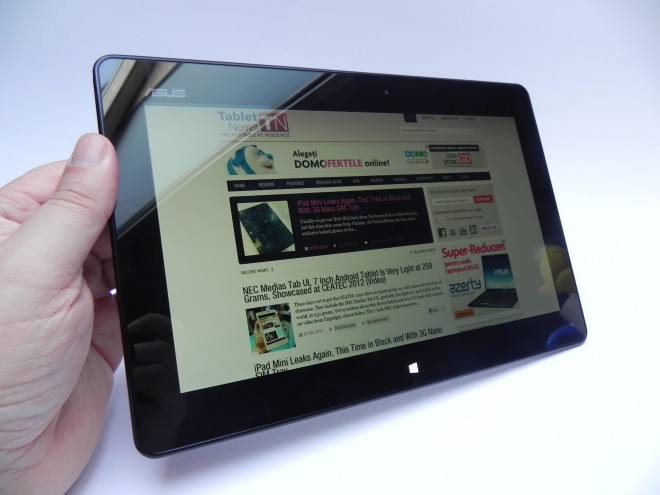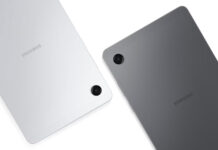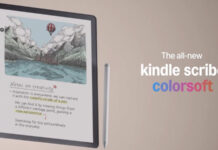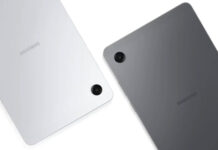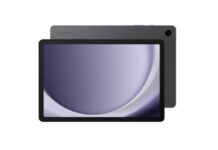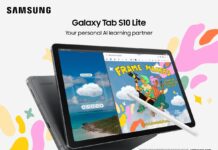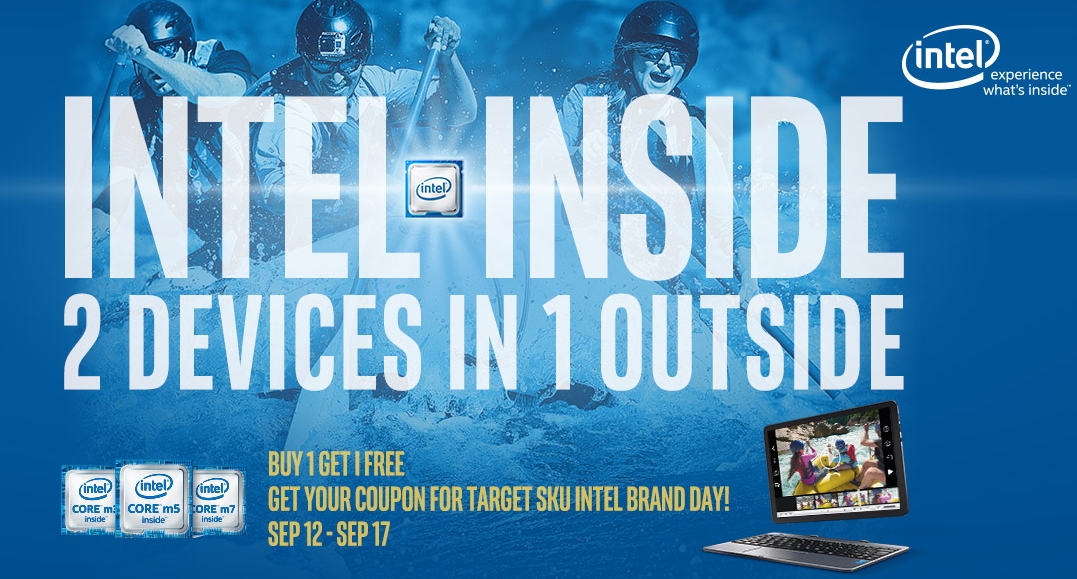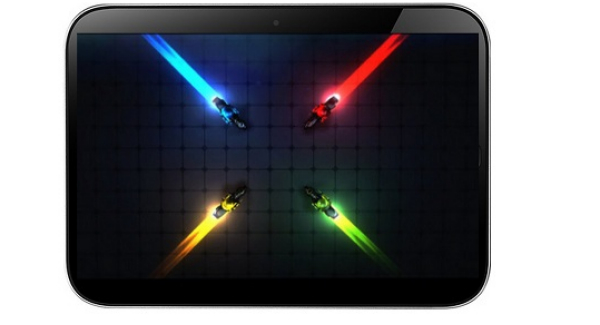2012 was a big year for tablets, since it was the first year they really became omnipresent among the gadgets that people carry with them. Also, during the holidays, there were actually more tablet activations than smartphones this Christmas, so this says a lot about how far slates have come. We’ve witnessed the launch of Windows 8 and Windows RT tablets, plus Microsoft’s own Surface slate. We’ve had a year with no less than 3 new iPads showcased and launched, plus two Nexus tablets. And now we’re arranging them in a top 10 according to our own opinions and the speculated/official sales and performance.
The ASUS VivoTAb RT is a beautiful tablet and no one can argue with that. It’s one of the slimmest slates out there, it’s got a metallic case and it can do video capture at 1200p. It’s got a bright screen and a special audio technology, that makes the sound more crisp and the bass better. This was also the first Windows RT tablet we reviewed, so it was a bit of a premiere. We really loved the way the Tegra 3 CPU handled Windows RT, but the OS per se felt unfinished. We loved how fluid everything was the multitasking via swipe was also nice, but waiting a couple of seconds for apps to open was a big no-no. We already reviewed this device, as shown in the video below and we think it deserves a spot in our top 10.
[youtube KIbQOHFc2ts 660 520]
ASUS PadFone 2 is more of a hybrid, since it combines the features of a 4.7 inch smartphone with the ones of a PadStation slate with a 10.1 inch IPS 1280 x 800 screen. You insert the handset into the tablet and the phone serves as its “brain”. We tested the white model and were very impressed by the 13 megapixel camera and the speed of switching from phone to tablet in a dynamic use mode. The screen is very crisp, colours are bright, the Audio Wizard audio tuning app is great, so everything works like a charm. To that we add 16 hours of combined battery life and a total weight of the phone + tablet that’s lower than the weight of the iPad 3 and iPad 4. The device is also thinner than the first PadFone and more elegant.
[youtube yFqUpqBCSOU 660 520]
Samsung Galaxy Note 10.1 had a lot of potential, since it was the most powerful device on the market when it came out. It had a quad core Exynos CPU, 2 GB of RAM, a 10.1 inch 1280 x 800 pixel display and a kickass S Pen with brand new features and more levels of pressure than the first Note. The device was plagued by how slow TouchWiz was at times and also by the creaking cheap plastic case. Other than that, the model was close to perfection, if such a thing exists. The multitasking dual window system was really appealing for everyone and the multitude of S Note features really won us over. Also, the audio quality was good and the screen was pretty bright.
[youtube 8XASAxJpjlc 660 520]
Frankly speaking, the Amazon Kindle Fire HD was a bit underwhelming, at least the 7 inch version we tested. In USA this device makes sense and it actually sells well, since people are already accustomed to Amazon, their services, products and offers, but right here, in Europe we’d rather go with the Nexus 7. Also, for some reason, the device feels a bit laggy compared to Jelly Bean slates and its web browser is painfully slow. To that we add the lack of a microSD card slot, volume buttons, back camera and GPS. It’s just a matter of taste, but the 8.9 inch Kindle Fire is the better one, if you ask me. It’s all about the nice resolution and the e-reading abilities that beat any other tablet when it comes to reading.
The appeal of the ASUS Transformer Pad 300 sits more in the price than anything else. If you were careful around Black Friday time you could find this product available for as about $300 or even lower than that. We’re talking here about a quad core tablet, one that offers a pretty looking design, 1 GB of RAM and one that received the update to Jelly Bean pretty fast. This is seen as a cheaper Transformer Prime of ASUS Transformer Pad Infinity, in a version accessible to the masses and available in colourful cases, to make it more appealing for youngsters. It also has a keyboard dock, that extends the battery life to about 15 hours of use. To that we add the possibility of connecting a joystick to it and playing games on Android on that bright IPS display with a special outdoor mode.
[youtube L9rbHfgDFO8 660 520]
5) Microsoft Surface RT
This is one of the most controversial tablets of the year, the Microsoft Surface RT tablet. It’s a device based on an ARM flavour of OS, that looks and feels like Windows 8, since it has the Metro UI, or formerly known as Metro UI and now known as Modern UI. The unique aspect about the tablet is that it looks nice, since it has a VaporMg casing and an unique styling, that makes it one of the most elegant slates out there. The product weighs 1.5 lbs and comes in 32 and 64 GB versions. It’s got a trademark kickstand incorporated into the magnesium case, with its own trademark sound. This is a quad core Tegra 3 tablet with 2 GB of RAM and 16:9 widescreen 10.6 inch ClearType HD display, with a 1366 x 768 pixel resolution. Inside the device we’ve got a 31.5 Wh battery and other specs of the product include a HD video put port and a microSDXC card slot, as well as a full size USB 2.0 port. Summing it all up, for $499 you get a pretty appealing product, one that deserves to be in our top.
The iPad Mini is a 7.9 inch tablet that no one expected to see from Apple earlier this year. However, they started feeling the threat of their rivals, as products such as the Nexus 7 and Kindle Fire became popular and people praised them for the accessible price and comfortable form factor. Apple thought that a setup worthy of the iPad 2 was enough for this smaller tablet, that comes with a dual core CPU and 512 MB RAM, plus a 5 megapixel iSight camera. It runs iOS 6.0 and it does it without flaws, so at least the experience is decent. All the games run well and there’s no lag in the tablet’s functioning. The camera is also pretty good and the virtual keyboard is excellent for typing, even in portrait mode. The selling point here, at least so we think is the long battery life of about 12 hours, that’s huge by all standards.
[youtube lBCdblvhO4g 660 520]
3) iPad 4
The iPad 4 is a redutable adversary for all Android tablets, since it offers a very good Retina Display on a 9.7 inch diagonal and Apple A6X CPU, that’s supposed to offer double the computing power of its predecessor. The iPad 3 was criticized when it came out for its minor lag problems and not handling the Retina Display too well. Well, all problems are solved on the iPad 4 and the only objection that someone picky could find is the thickness and weight of the device. The iPad 4 is right now the perfect gaming device, that in some ways is better to have around you than a full fledged console. I’d take the iPad 4 over a Wii U any day, if you ask me and also its business features will be highlighted once the device gets the special Office for iOS release.
2) Nexus 10
Nexus 10 is the highest end tablet money can buy at the moment and although the design is not exactly top notch, this is the kind of gadget that will keep you at the top of the game for at least one more year. It has a 10.055 inch 2560 x 1600 pixel display, a WQXGA True RGB Real Stripe PLS screen with Corning Gorilla Glass 2 protection, plus 16/32 GB of storage, 2 GB of RAM and a dual core Cortex A15 CPU. Nexus 10 measures 8.9 mm in thickness, weighs 603 grams and brings forth the new generation of Mali T604 quad core GPU, excellent for next gen gaming. There’s also the latest Android on board, version Android 4.2 Jelly Bean and the guarantee of fast arriving future updates. We’ve also got a 9000 mAh Lithium Polymer battery, that should provide a bunch of hours of functioning time.
And here we are with the big winner, Nexus 7! This is the 7 inch quad core Tegra 3 tablet that everyone wants to play with, an extremely comfortable and easy to use device, that’s priced at just $199 in the most basic version. It started off as a WiFi only device with 8 GB of storage and now it sells in a 16 GB version, plus a 32 GB 3G one, that’s actually a bargain for about $360, while the one without 3G is $319. This was the first Jelly Bean tablet out there, with Project Butter on board and very fast functioning. It was incredibly comfortable to hold with a single hand and also very easy to use, to rest on your belly while lying in bed and more. I wouldn’t find the lack of camera and microSD card very bothersome to be honest, seeing how this model is an excellent gaming device and media player.
[youtube ozzenuFwS6Q 660 520]
So, there you have it, this is the 2012 top 10 for tablets, with the Nexus 7 at its top. It has been the year of smaller tablets and the year of the Windows 8/Win RT debut. Next year we may see the latest Windows release on the podium, through some new Surface tablet or some other model, but for now Android is the big winner and iOS tablets a bit of a bummer this year…
Post Footer automatically generated by Add Post Footer Plugin for wordpress.

